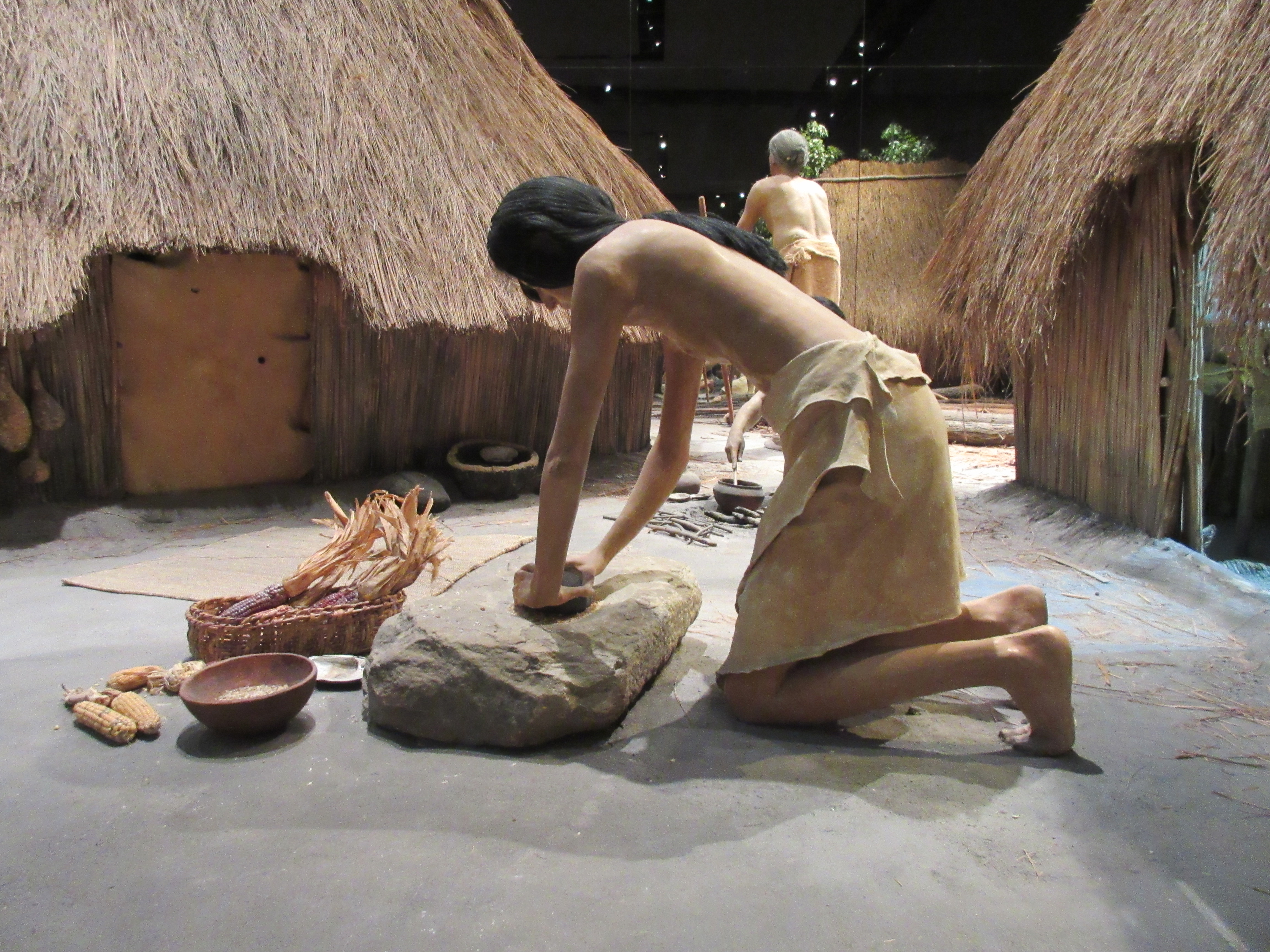Cahokia Mounds, the Indian city that was
It is truly mind boggling that an entire Indian City, the largest prehistoric Indian site north of Mexico, was located near Collinsville, Illinois. The site covered 4,000 acres and included at least 120 Mounds. Although today the remains of what was and the mystery of why they left are things we wonder about, visitors can come to Cahokia and learn about these Mississippian Indians through the museum and Interpretative center.
The remains of this prehistoric site are preserved within the 2,200-acre tract. According to archaeological finds, the city of Cahokia was inhabited from about A.D. 700 to 1400. The first Indians to live in Cahokia were the Woodland Indians. Over time, the Cahokia Mounds brochure states, “From AD 800 to 1,000 the Mississippian culture began as highly structured communities arose with a complex social and political system…”
The site around 1050 AD became a regional center with towns, fields, villages and mounds that covered over six square miles with a population of 10,000 – 20,000. The regional center was organized around Monks Mound, the largest prehistoric earthen construction in the Americas which contained an estimated 22 million cubic feet of earth. History from the site shares, “a massive building once stood on the summit where the principal chief would live, conduct ceremonies, and govern.”
The mound was named for the nearby French Trappist monks. The mounds were built using soil from “borrow pits” dug with stone and wood tools. The earth was then moved in baskets on their backs.
Some of the mounds had a flat top for ceremonial villages and residences for the elite. The conical and ridge top mounds were often used as burial grounds for the important people or as location markers.
Over 120 mounds were built over time, and most of the mounds were enlarged several times. Houses were arranged in rows and around open plazas, and vast agricultural fields lay outside the city. The name Cahokia came from later Indians related to the Illini tribes. The site has been an amazing archeological site worth visiting. This is a history every Illinois resident should know about.
Sadly there is probably more not known about the Indians that inhabited Cahokia than there is known. Over time hopefully some of the questions will be answered. For now though, what happened to end the Cahokians and their city is a mystery. Educated guesses are that there was a depletion of resources that probably contributed to the city’s decline. But for now, we only have the mounds and the artifacts they left behind to base our knowledge of this once great nation.




